News
Take a sneak peek inside Noceto with interviews, reviews of the vineyard, and more! Want to hear what everyone else is saying about Noceto? Check out our Press page.
Welcome Back to Anamieke Kegge (née Mason)!
When my parents, Suzy and Jim Gullett, founded Vino Noceto almost forty years ago (read the full story behind Noceto), they knew that they cared about more than making great wine. They sought a community where winemaking, people, and history were inexorably intertwined and set down their roots in Amador County.
Over the past forty years, they’ve planted innumerable vines, and dozens of employees have passed through their doors. Today, Suzy, Jim, and Vino Noceto are ecstatic to announce the return of an employee who left us for a neighboring winery almost a decade ago.
Welcome back to Anamieke Kegge (née Mason)!
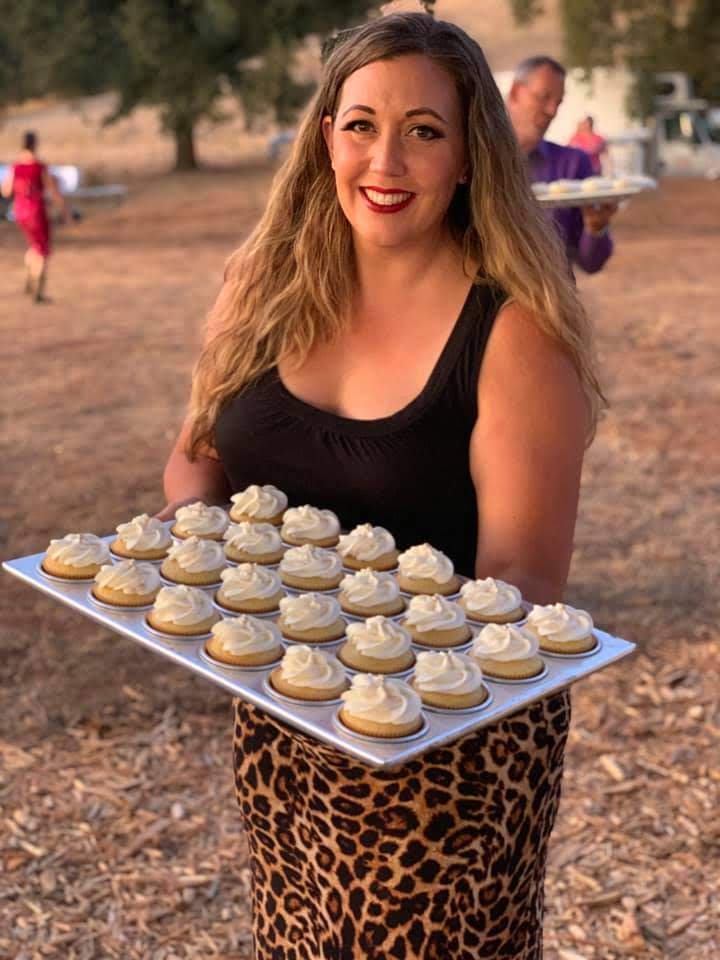
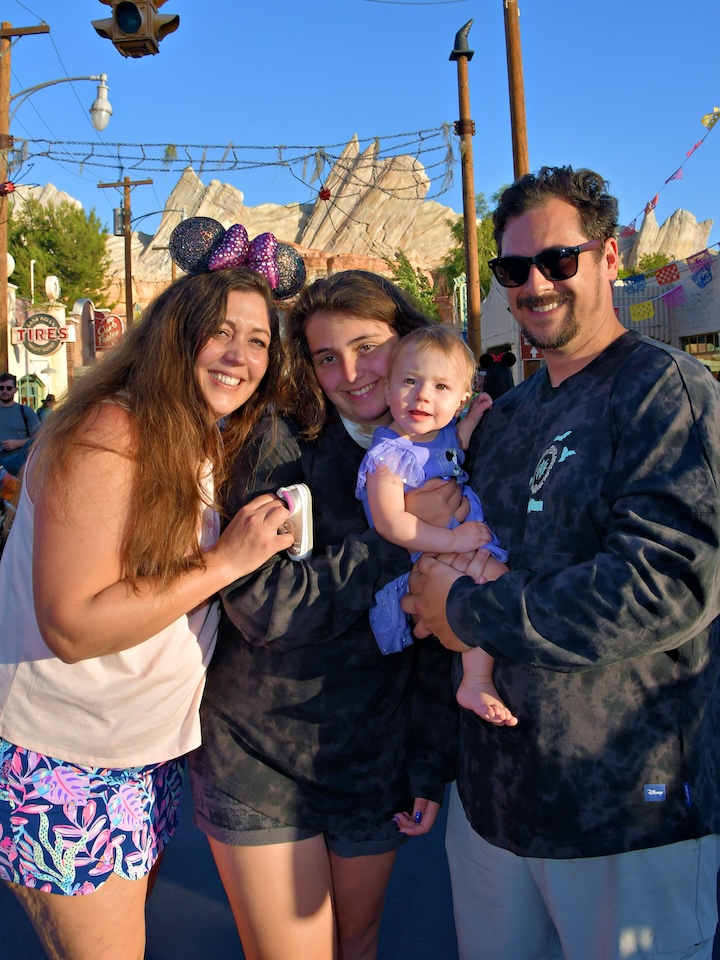
Back in 2014, Anamieke was Vino Noceto’s Wine Club and Marketing Manager. As Anamieke describes it, though, she did far more than manage club and marketing. Needed website maintenance? Anamieke was your girl. Weren’t sure how to use a new piece of software? You went to Anamieke. Looking for someone to design a handout? Yep, that was Anamieke too. She even masterminded the original label mockup for Vino Noceto’s most premium Sangiovese, AX-1, and if you haven’t heard the story behind the label, definitely ask Anamieke about it next time you stop by the Tasting Room.
After nine years at Terra D’Oro out on Shenandoah School Road, Anamieke returns as Vino Noceto’s Director of Sales and Marketing, a role known to frequently feed directly to head honcho. (Well, head honcho below to two main honchos, Jim and Suzy!)
Like Winemaker Rusty Folena and Tasting Room Manager Garrett Linker, Anamieke grew up in Amador County, and her family’s connection to Amador County dates back even further than that of us Gulletts. The Masons’ rich history in the area spans generations.
Anamieke’s paternal grandfather, Doc Mason, arrived in Amador in the 1950s and managed one of the original Spanish land grants in Ione, the Arroyo Seco, which means dry stream in Spanish. (Fun Fact: Arroyo Seco’s owner C.S. Howard also owned the famed racehorse Seabiscuit.) On the maternal side, Anamieke’s mother comes from a line of dairy farmers who emigrated from Holland in 1946 before eventually settling in Oakdale. And after meeting at Modesto Junior College and moving on to UC Davis together, Anamieke’s parents settled in Amador and started their family.
From her three younger brothers to her many aunts and uncles, Anamieke’s family embodies Amador County spirit. I still remember riding the bus with one of her younger brothers, Douwe, and just like Anamieke, he filled the otherwise dull and overlong ride with joy, jokes, and smiles. The lives of the Gullett and Mason families have been intertwined for decades, and one could argue that Anamieke grew up alongside Vino Noceto.
Noceto’s first vines were planted when Anamieke was only one year old. Winemaker Rusty Folena’s mother-in-law was Anamieke’s Elementary School aid. And Anamieke was a classmate of my older brother, Bobby. She remembers that childhood version of Bobby fondly.
“Bobby was just always the class clown. He was always so nice, and he was somebody who’d never be stuck up or ignore you. Bobby and I were always friends. He kinda reminds me of my middle brother Douwe. They’re social goofballs.”
While Bobby isn’t quite the goofball that he was as a child, he’s still every bit as kind, and I know how excited he is to have Anamieke joining the family business.
Like many Amador County kids, Anamieke left the area for college, but after attending Chico State and enjoying a brief out-of-state stint while her husband was stationed in El Paso, Anamieke couldn’t wait to return to Amador County, her family, and wine.
As she puts it, “I love Amador County. The community. The history. I love all of the ranching and farming families and the ties that run generations deep. One of my favorite stories to tell customers is that I wasn’t all that old when your parents started this winery. I was competing on horses, and I wrote your parents a thank you letter. It was addressed: Dear Mr. Noceto.”
Of course, she now laughs at herself and knows quite well that there are no Mr. Nocetos on site. But there are quite a few Gulletts.
Just like her return to Amador, Anamieke feels like coming back to work for Suzy and Jim is like returning home. She says, “I’ve always really loved Jim and Suzy. The community vibes here and the community connections run really strong … Vino Noceto has those ties to Amador’s people and history. Plus, Rusty [Folena] makes the best wines in the county, and you can’t argue that.”
And Anamieke really does love wine. At the end of a long weekend, she’ll bring home a bottle of Marmellata and sip it on the back porch with her brothers and dad. That said, she does recommend sticking to wine glasses for your wine sipping. She once purchased a set of Austrian glass goblets to get into character when watching Outlander but found that the wide-rimmed, open shape of a goblet doesn’t properly trap the scent of Burgundy or Bordeaux.
As our conversation meandered back to Noceto, Anamieke went on to explain how much she enjoys working with my parents. She reminisced about afternoons spent nerding out over books and pouring over data and analytics with Suzy. (Data and analytics really are fun. I swear!) Anamieke loves the way that Suzy and Jim play off each other like yin and yang. As Anamieke explains it, Suzy lives for the details, always working from the bottom up, and then when it’s time to think big picture, Anamieke knows that Jim’s the Gullett to chat with over a glass of brandy. (Jim’s a brandy man.)
Anamieke’s been back at Noceto since October, and I can already see the impact that she’s having on Noceto’s team. The Tasting Room feels all that bit brighter, and everyone’s a little more excited. We all feel the potential for something more, yet confidence remains that our history and tradition will not be forgotten.
When I asked Anamieke about her plans for the future, she shared some ambitious ideas that got my heart racing and my stomach growling.
“I’d love to see the gorgeous venue space of the pavilion to be used for corporate retreats, weddings, and events. I’d like to bring back some really signature dinners. I’ve got some plans for a high-end dinner in the orchard. I just want to get people back up here to the county to enjoy the incredible events, region, and wines.”
As for me? I simply hope that Anamieke’s dinners feature her famous soups. She’s quite the genie in the kitchen.
Anamieke’s joy and optimism is absolutely contagious. Next time you’re in the valley, run (or walk) to say hello to Anamieke. The whole Gullett Family is unbelievably honored to have her. And I don’t know about you, but I can’t wait to see what the future holds.
If you want to say hi to Anamieke, you can reach her at anamieke@noceto.com, (209) 286-7840 (text), or (209) 245-6556 (phone).
Arrivederci and Cin, Cin from Noceto!
A Letter from Suzy & Jim Gullett: Celebrating Vino Noceto's 30th Anniversary Vintage of Sangiovese
Hello from Sunny (but Cold!) Amador County!
It’s hard to believe we’ve been selling Sangiovese for thirty years now. That’s right. The 2019 is Vino Noceto’s 30th vintage of Sangiovese!
Back in 1984, we had no intention of starting a winery. We had our hands full. Jim was working full-time as a Banking Software Consultant, traveling all over the world, and our sons were one and three years old. All we were looking for was a simple country property where we could plant a small vineyard.
We visited properties in Napa. We visited Sonoma. We visited Mendocino’s nearby Anderson Valley. And we visited Amador County. We fell in love with Amador’s golden rolling hills and its small-town charm, and Jim knew of its long history as one of the great grape-growing regions in California.
At first, we were set on a piece of land at the very end of Dickson Road – down a mile of curves and hills, perched high above the Shenandoah Valley. To the East, you could see the tips of the snow capped Sierras, and to the West, the peak of the San Francisco Bay Area's Mount Diablo.
The view was stunning.
We brought Suzy’s father, David, a businessman and contractor, to see the property. He shook his head and said, “No.” He pointed at the property where our Tasting Room now sits, and said, “If you have any commercial aspirations, that’s the one you want – the one on the main road.”
We talked night after night, over many bottles of wine. We asked ourselves: Did we have commercial aspirations? And finally, we concluded that perhaps we did! We followed David’s advice and bought the parcel at 11011 Shenandoah Road in September 1984, and Vino Noceto was born.
We spent a year deciding what to plant on our property. We wanted to be different. No Cabernet, Zinfandel, or Chardonnay for us! By September 1985, we settled on Sangiovese, Italy’s leading grape variety, and a grape that, at that time, was virtually unheard of in California. Everyone thought we were crazy to pick Sangiovese. That is, everyone except for Darrell Corti of Sacramento's Corti Brothers. He believed in Sangiovese too, and he helped us set up a three-week tour of some of Tuscany's most respected Chianti and Brunello vineyards. We visited mainstays like Castello dei Rampolla, Argiano, and Isole e Olena.
After experiencing Tuscany's terroir firsthand, we were convinced that Sangiovese was the right choice for our Amador property.
In the Spring of 1987, with the help of friends and family, we slowly planted row after row of Sangiovese vines, using cuttings originally sourced from the Il Poggione vineyard in Tuscany’s Montalcino. It took three years for those vines to mature enough for us to produce our first vintage.
That first vintage, 1990, was only 110 cases. Of those 110 cases, 45 went to Corti Brothers grocery store in Sacramento, and 15 went to the Walnut Creek Wine and Cheese Shop, a small wine shop in Suzy’s childhood hometown. We sold the remaining 50 cases via mail order to family and friends. They disappeared in the blink of an eye.
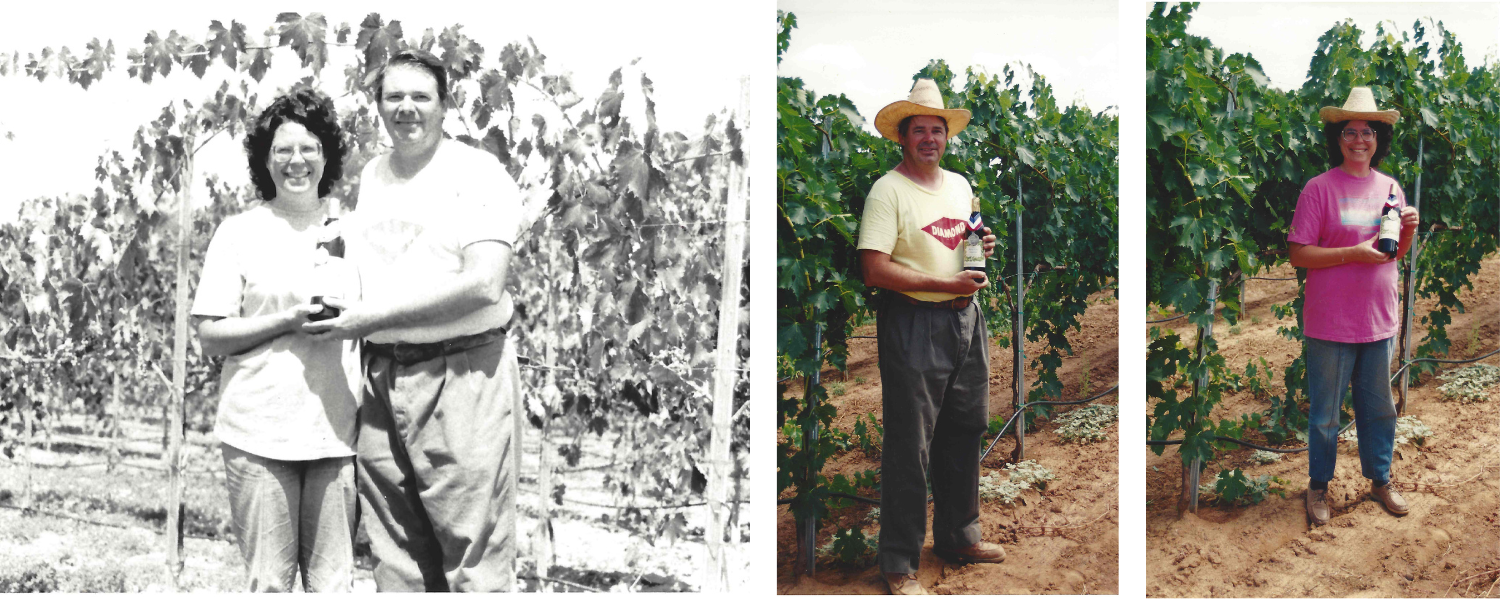
Photos: Us in our Hillside vineyard, holding a bottle of our first vintage of Sangiovese. It's hard to believe we ever looked so young!
For our second vintage, the 1991, we produced 800 cases of wine – it seemed an intimidatingly large number. Our custom crush winemaker, Scott Harvey – then of Santino Winery – gladly volunteered to take 150 of those 800 cases off our hands, selling them under the Santino Winery label. Unlike us, Scott knew the 1991 vintage was good. He knew our Sangiovese could stand up against the best of the Italian Chiantis and Brunellos and would be simple to sell. But we found that hard to believe.
In fact, we didn’t really believe in our Sangiovese’s salability until Suzy set up a card table at Santino Winery during one of Amador County’s signature, valley-wide wine events, The Big Crush.
To our surprise, standing at her small folding table, she successfully sold case after case of Vino Noceto Sangiovese to complete strangers. The first stranger to buy Noceto wine from Suzy was Richard Neuharth, a longtime Santino customer from Lodi. Like many customers we met at Santino, Richard graduated from tasting Vino Noceto Sangiovese at the Santino card table to joining us for a sip on the back porch at our Shenandoah Valley farmhouse.
For the first nine vintages, it took us less than six weeks to sell out of wine. We didn’t have a Tasting Room or Winery facility. We didn’t have a staff. It was just Suzy (and sometimes our kids!) manning the phone and making connections wherever she could. Customers would send us orders and checks via snail mail, and sometimes we’d ship (or hand-deliver) the wine before the check even arrived!
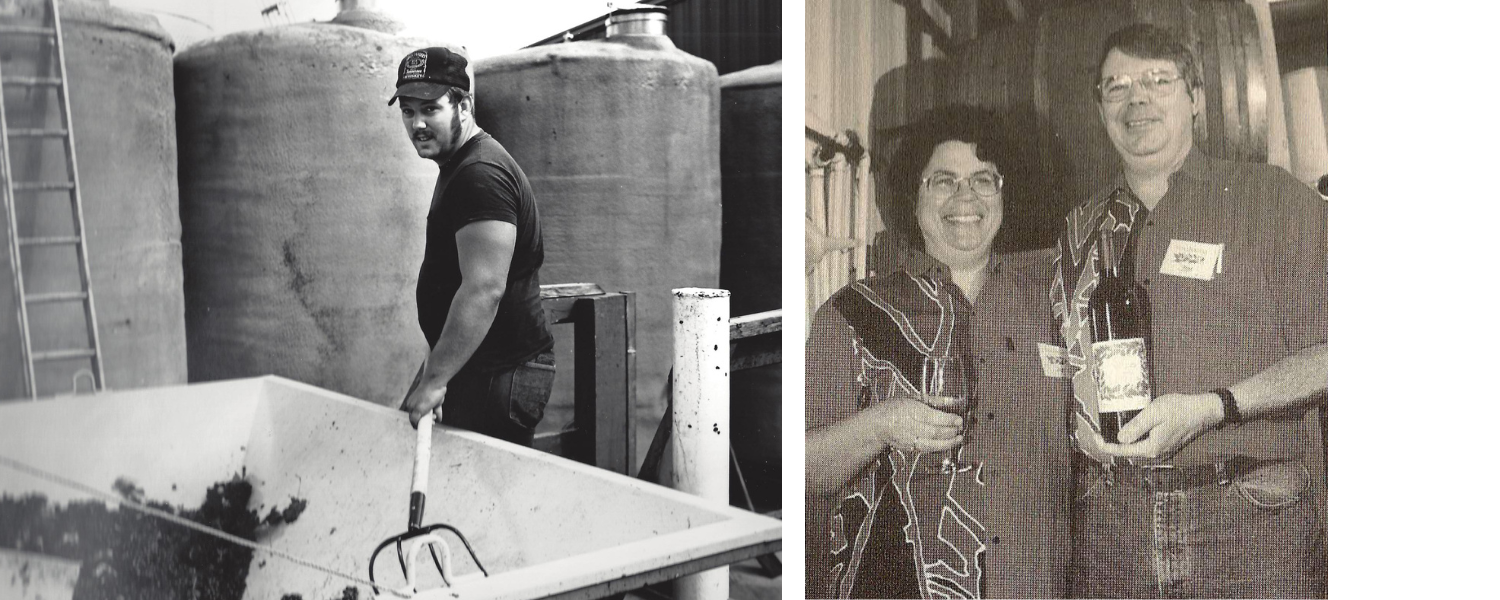
Left Photo: Vino Noceto's long-time winemaker, Rusty Folena, back when he was a Cellar Hand at Santino Vineyards. Right Photo: Us holding one of our early vintages of Sangiovese.
Times have truly changed. Today, we produce almost 10,000 cases of wine a year, including a dozen different Sangioveses – from the United States’ first White Sangiovese to our Dos Oakies Sangiovese, produced from vines in that first block planted in 1987. And our production isn't limited to wine. We also make Grappa and olive oil!
And just as our vineyards and production and facilities have grown, our Club has grown too.
Vino Noceto now has over 2,000 Club Members. We have Club Members who are the children of the children of our original Club Members. We have Club Members who’ve been with us for over twenty years. We have Club Members who have left and returned.
Yes, we’ve certainly grown over the years, and Noceto’s Nutty staff is now big enough to field an entire baseball team. But we still strive to remember each and every one of you by name, just like we remember Richard Neuharth, the very first stranger to buy Vino Noceto Sangiovese at Suzy’s card table. (If you saw the way Suzy sits at her computer, reviewing the name of every club member and customer, you’d know how true this is! She really does remember every single name.)
We are so proud to share our 2019 vintage, the 30th anniversary vintage of our flagship Sangiovese, with you, our Noceto family. It is one of our best yet, with Noceto’s signature bright and light cherry-berry flavors that match with almost any meal. We hope you enjoy it as much as we do.
Thank you for an amazing thirty years. We are so thankful for each and every one of you, from those of you who started drinking Noceto at a card table with Suzy to those who are trying Noceto Sangiovese for the very first time.
Don’t be a stranger. Join Jim for a tour of the estate. Call Suzy for a midnight chat. We’re here, in the Tasting Room, behind computer screens, and just on the other side of the phone.
Frivolo in a Can - the Birth of An Idea
Are you looking for the perfect summer beverage? Well, look no further because “Frivolo in a Can” is almost here! If you haven’t had the pleasure of trying it, Frivolo is our slightly sparkling Moscato Bianco that is perfect for sunny days or days that just need a dose of sunshine.
After almost 20 years of making Frivolo in a bottle, we’re finally releasing Frivolo in a sunbathing, camping, tailgating, and boating friendly format. Say hello to Frivolo in a Can! It's slightly spritzy. It's slightly sweet. It's super refreshing.
As many of you know, our fans were a big part of designing our new can.
Back in April 2016 (a year ago!), we posted our first set of mock-ups on Facebook to get your feedback. Out of the six designs, one blew the others out of the water with 15 more likes and 27 more comments than the next most popular design.
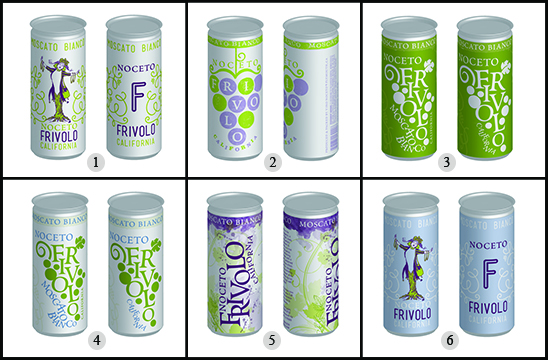
Of the original 6 designs, can you tell which one was the big winner? Suzy Gullett loved can number 2, but the can with the vertical text and dripping wine juice (number five) came out ahead with the fans!
Our fans had declared a winner, but we weren’t done yet. We told label designer Adam Sullivan of Balzac Marketing what we loved about the winning design – like the vertical text and the wine juice running over the can - and what we wanted to change. We wanted a design that was light and frivolous but also modern and fresh. We wanted happiness and sunshine.
Adam took our feedback and knocked it out of the park. His next design was a clear winner…but we couldn’t pick a color, so we posted our favorite colors on Facebook, and let our fans pick!
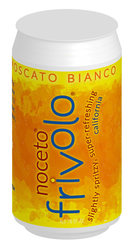
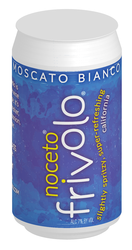
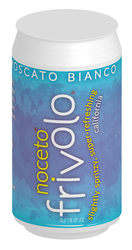
In the battle of colors, the yellow and gold sunshine in a can narrowly edged out its cooler-toned competitors.
It was a close battle, but the fans chose sunshine in a can in yellow and gold. With our design finally ready, we submitted it to the TTB for approval, and a week later, we ordered our cans. This March, we brought in a mobile canning line, and after a few hours of filling, packing, and stacking, Frivolo was officially canned!
Frivolo in a Can will be making its debut on April 9th, the same day as our sold out Adult Easter Egg Hunt. To welcome these little cans of sunshine, we will have a DJ, a waffle truck, a caricature artist, LuLaRoe, Stella & Dot, and more. Stop by anytime between 11 a.m. and 4 p.m. (Please note that the 11am Easter egg hunt is sold out, but the Frivolo in a Can release is still open to the public.)
Frivolo in a Can is available in a four-pack for $18, the same price as a bottle of Frivolo. Each 4-pack is the equivalent of one bottle of wine. The cans are perfect for BBQ’s, pool parties, music festivals, sporting events, boating trips, or anywhere you can bring a cooler. We only made 200 cases, so get some before it sells out! Club members can pre-order cans by calling 209.245.6556 x4 or emailing wineclub@noceto.com
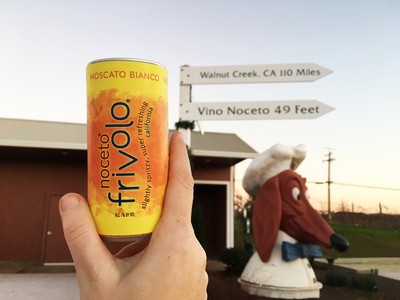
Doesn't it look delicious! The staff tried a pack, and they think that the can is even better than the bottle - fresher, lighter, & spritzier!
An Interview with Winemaker Rusty Folena
If you missed last month’s interview, let me fill you in. My name is Ginger Budrick and, over the course of several months, I am interviewing various staff members at Vino Noceto, so you can get to know the folks behind your favorite wines. Last month I interviewed Lindy Gullett. If you didn’t get a chance to read it, you can find her interview under the News tab on the Vino Noceto website.
This month, I had the opportunity to interview Rusty Folena, Vino Noceto’s winemaker. I met Rusty and his dog, Heidi, at the winery, on a beautiful Tuesday after a storm. We sat in his office, chatting about his life and how he got to be where he is today. I must say, I felt intimidated meeting a winemaker, but Rusty was very down-to-earth and humble. His energy was instantly welcoming and all the nervousness I had about meeting him immediately disappeared when I sat down. I hope you enjoy getting to know him.
Rusty Folena is an El Dorado County native who moved to Amador County in 1980 when he was a freshman in high school. He graduated from Amador High School in 1984. Now, Rusty lives in Plymouth with his high-school-sweetheart-turned-wife, Beverly, and their son, Colton.
In 1983, when Rusty was a junior in high school, he got his first winery job, at Santino Wines, working for Scott Harvey. When I asked him what he did there his answer was, “Anything!” Rusty went on to explain, “My first introduction to the wine business was through my friend, Sheldon Potter, at Potter/Cowan vineyards. We went to high school together and his dad used to put us to work in his vineyard, and I ended up delivering grapes to wineries, including Santino. That’s how I got to know Scott.”
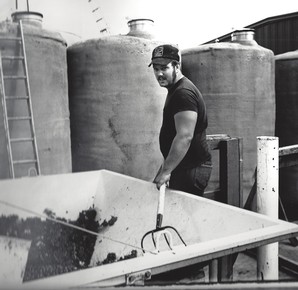
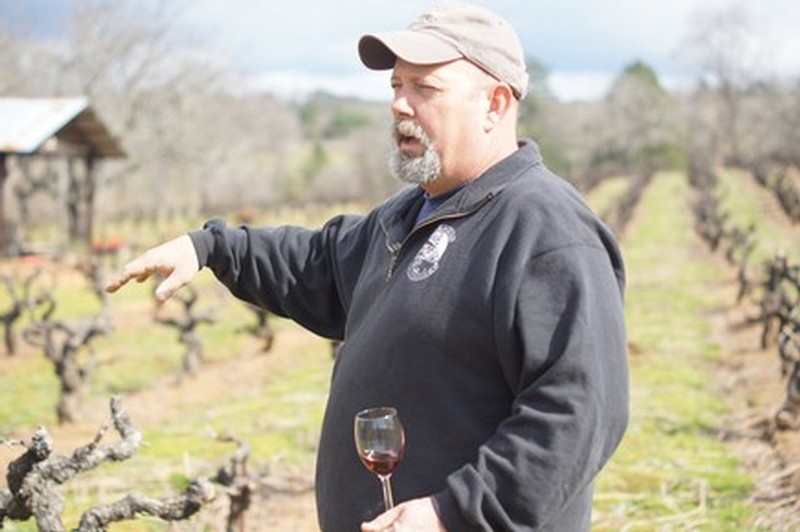
You may be wondering how a high school kid who worked in the vineyard on weekends got to be the winemaker at one of the most prominent wineries in Amador? The answer is — through old-fashioned hard work and dedication. I asked Rusty what his role was when he first started at Santino and his answer was, “Grunt. I was a general winery worker. I did anything from mechanics to wine work to anything they asked me to do.”
Rusty’s hard work and do-anything attitude paid off. He ended up working at Santino for 15 years and eventually became the cellar foreman. “That’s when it really turned into a career,” says Rusty. He told me that every time he would try to leave the wine business to pursue another career path, the job would get a little bit better.
“I used to do vineyard work for Scott, and with that I learned a lot about vineyards. And through Don Potter, too. Pruning, planting, taking care of the vines … a lot of those teachings go directly into winemaking. Scott was a great teacher. He’d show you anything; he didn’t keep anything hidden,” says Rusty.
Rusty went on to say, “I’m still learning. Not a day goes by that you don’t learn something. And, once you think you have it mastered, it will come up and bite you, big time. If you think you know it all and you’ve been there/done that, Mother Nature has a way of throwing you a curve ball. And it really humbles you.”
Now, I was pretty taken aback by the above statement coming out of Rusty’s mouth. This is a man who has made some pretty incredible wines. I’ve tasted them. You’ve probably tasted them. It would’ve been easy for him to say he was an expert and take all the credit for the delicious wines he’s been turning out all these years, but he didn’t. Instead, he was sitting there telling me that Mother Nature and learning had played a big role in everything he’d made over the years. And I found that to be quite refreshing, inspiring even.
In addition to all the hands-on learning in the wine business over the years, Rusty has taken courses at UC Davis and worked as a dirt contractor and a sideline worker for a plumbing/sheet metal/heat and air company. “To be valuable in a small county like this, the more you can do or at least be able to say ‘I know a guy you can call for this,’ you make yourself more valuable for the people you work for,” says Rusty.
In 1999, Rusty left Santino/Renwood winery and, later that year, started working at Vino Noceto. “I’m lucky that I could come out of high school and find a job within the county that I like living in. I didn’t have to go abroad, didn’t have to go anywhere, sometimes it does work like that. I’m lucky. My job turned into a career and my career turned into what we’re doing here now.”
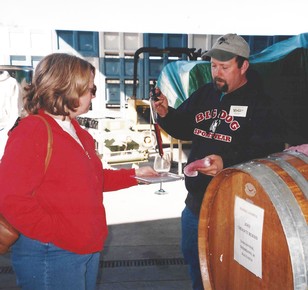
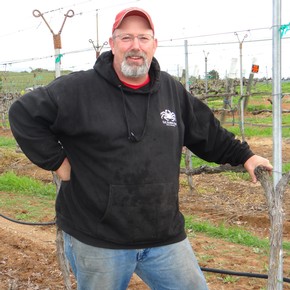
I asked Rusty what he thought about the Amador wine region and he said, “When I started, there were eight wineries in the county. Now, there are over 40 wineries. A lot of the same players are still in play and I think it’s an emerging region. At one point in time, it was called ‘Amateur County.’ We were kind of forgotten up here for the longest time. We have some very good wineries, lots of different wine styles, and lots of different personalities up here. I think this is a quiet little area that is growing pretty quick. As people and wineries identify themselves as to what style they’re doing, it’s going to get better and better. Jeff Runquist is very distinctive. Bill Easton is very distinctive, and we’re the only ones doing Italian wine. I think as these younger wineries figure out their plan, there’s only good to come for this area.”
When I asked Rusty what it was like working for Jim and Suzy Gullett, he told me that he loved it and thought they were very down-to-earth people. “What made it easy about Jim and Suzy is they had a definite plan in place. They knew the direction they wanted to go in and we just fit. That’s the direction I came from, with the European-style winemaking techniques. That’s how I was trained. It’s a well-suited match,” says Rusty.
Of course, I had to ask Rusty what kind of wines he likes to drink. His response was, “Call me old-fashioned, but I like aged wines. I like Italian wines and I like older French wines.”
When I asked Rusty if he had a favorite of the wines he makes, he said, “That’s a tough one; everybody asks me that. I like every wine I make. If you’re gonna pin me down, the one thing I’m most proud of is our Originale. To have that wine consistent all these years is a pretty big thing to do.”
Before Rusty and I parted ways, he had one last thing to say and that was that the most important part of winemaking is done out in the vineyard, long before the grapes are made into wine. “Most of my work is done out in the vineyard. If we don’t grow it right, there’s no way we can make good wine. Our year starts in March, when we prune for the first time, and then our pruning decisions lead into harvest decisions, which lead into wine-making decisions,” says Rusty.
Before I left the winery, Rusty gave me a bottle of wine to pair with the dinner I was cooking that night and allowed me to take a picture of him in front of the grape vines. I thoroughly enjoyed getting to know Rusty and hearing him talk about the relationship between his wines and the Earth. I hope you enjoyed this interview, and I look forward to telling you more about the people of Vino Noceto.
An Interview with Lindy Gullett
2017 has officially begun and, to ring in the New Year, I’m going to help you get to know the folks at Vino Noceto. My name is Ginger Budrick and I’ll be interviewing multiple staff members at Vino Noceto over the coming months. Then, I’ll write about the interviews, so that you can read them and get to know the people behind your favorite wines.
I wanted to start with a bang, so I interviewed Lindy Gullett. I should be honest and tell you a few important things about Lindy up front: she is the only daughter of the winery’s owners, Jim and Suzy Gullett; this interview series was her idea; and, I know her pretty well. In fact, a lot of people who are reading this might know her pretty well, or at least know of her. However, I still thought that she was the most fitting person to interview to launch the series. Why? Because she is a force to be reckoned with. She is geared up to do big things for Vino Noceto in the next few years, and her passion for wine and her family’s winery can be felt in every single conversation she has.
Even though I have dinner with Lindy a couple of times a week, I treated this the same as I would any interview. I scheduled a time to meet with her; I drove out to the Vino Noceto estate; and we sat down in the sun and had a legit interview. I learned things about her that I didn’t know, and I hope you do, too.
During the interview, Lindy told me a lot of wonderful stories — stories of the winery at the beginning, stories about Sacramento connoisseur Darrell Corti convincing her parents to plant Sangiovese grapes; about Scott Harvey being their first winemaker; about how the tasting room used to be open only when her parents happened to be in town and they’d pour wine on a bar made of a piece of wood placed on top of two barrels. There also were stories of her and her brothers playing on the property and of her parents figuring it all out. With every story she told, I imagined the little girl version of Lindy, with her big blue eyes, intently listening to her parents tell the stories over dinner and hanging on every detail. She obviously cares immensely for her parents and their wine. She re-tells these stories beautifully. I will share as many of her stories as I can in one interview, but I also want to save some for when I have the opportunity to interview Jim and Suzy.
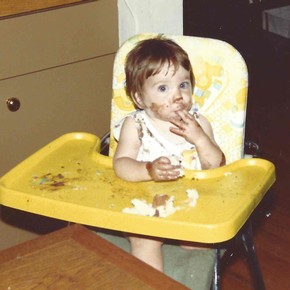
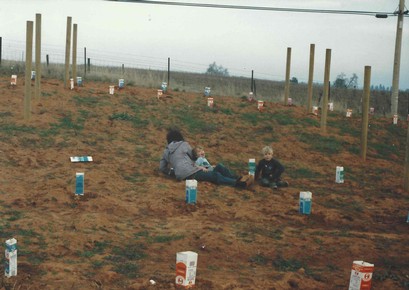
For now, let’s start at the beginning (of Lindy’s life, that is). Lindy was born in Lafayette, California, in 1987 and would visit Amador almost every weekend, because her family had purchased the property that would become Vino Noceto in 1984. “In 1987, when they first started planting, they took pictures of my mom planting the grapes and we know that I helped plant them, because she was pregnant with me. So, I was there for our very first planting,” says Lindy.
When I asked Lindy what her first memory of Vino Noceto was, she said, “There used to be two oak trees on Dos Oakies, the first plot we planted. My first memory here is swinging on a tire hanging off one of the oak trees. I was probably 6 or 7 and I remember the tire swing spinning around with me and my brothers on it.”
In 1995, the Gulletts moved to Amador full-time and Lindy started going to Plymouth Elementary. Lindy recalled, “I loved coming up here for the weekends, but when we moved here, I threw a hissy fit. I cried every night for two years, really loudly, just to put on a show. I’m talking about the dramatic crying, where you’re not actually crying, but you’re crying to be heard.”
Lindy eventually recovered from the childhood pain of moving and learned to love Amador County. “So many people in Amador work in the hospitality industry that you learn to socialize and get along with anyone growing up here. It really teaches you social skills, teaches you customer service. It teaches you how to think about what other people are thinking and what they really want,” says Lindy.
At this point in the interview, the subject of cancer came up. I knew that Lindy’s mom had battled cancer in the past, so I asked her if she would be comfortable talking about that experience for a bit. She told me that her mom was first diagnosed with cancer when Lindy was eight years old, right around the time that they moved to Amador. That first bout of cancer was stage one breast cancer and Suzy only had to do radiation. Lindy says to her eight-year-old brain, it just seemed like a really prolonged flu.
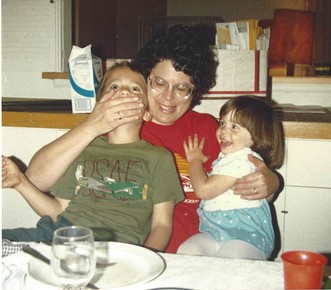
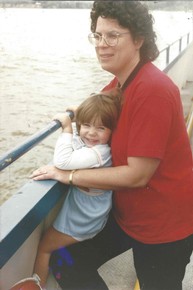
Unfortunately, a few years after that, when Lindy was 13, her mom was diagnosed with ovarian cancer. “That was a much bigger deal. She was told that she had a life expectancy of about two years. We had to come to grips with the idea of living without my mom. I’ve always been really, really close to my mom, so it was like, ‘Oh, my God, this person who I’m so close to suddenly might not be around.’ It felt so young to not have my mom around,” says Lindy.
Luckily, Suzy lived much longer than two years after being diagnosed with ovarian cancer. “She was on a really heavy cocktail of chemo and sometimes it would knock her out and there would be a week of lost time. She got really lucky. She has a body that responds really well to chemo. She was on chemo probably 75% of the time for 15 years. Sometimes she would get a 6-month break. But, now she hasn’t had to do chemo for two-and-a-half years. She feels great now! This is the happiest and healthiest and most mentally aware I’ve seen my mom since I was 12 years old,” says Lindy.
Lindy spoke a bit more about her mom’s cancer struggle by saying, “Not only did she get pulled away from us, she also got pulled away from all the things she loved. She couldn’t come to work every day like she had before. She couldn’t do all the things she was doing before. Up until then, she had been so involved. It’s crazy thinking what Vino Noceto would be today if my mom hadn’t been sick. For 15 years, she was only half of herself. It’s not even all of her. She’s a marketing genius. She’s never let anything that wasn’t up to really high standards come out; she’s always held our wine up to really high standards; she always made sure our labels were printed well, that our printed materials were really high quality; she made sure that everything that came out was something that she was proud of. The fact that she was able to do that even when she was so sick is just amazing to me. She never let the fear of death control her life.”
Lindy and I talked at length about the early days of the winery. “My parents first bought this parcel in 1984, so I wasn’t even born yet. Then, they took my brothers to Italy because they thought, ‘the weather here has that sunshine of Italy,’ and they thought Italian grapes would do really well here. They spent three weeks traveling around Italy, tasting different wines and trying to decide exactly what to plant. They did it in the direction that I think you’re actually supposed to. They got their land and then thought, ‘What varietal should be planted here?’ instead of deciding what varietal they wanted to do and then finding land for it. They said, ‘What is perfectly suited for this spot we have? What would grow the best here? Oh, and they had wine every night with dinner for a year. So, they really tried to pick something that went with food.”
In 2005, Lindy graduated from Amador High School and went to Pomona College, where her father, aunt and brother had gone before her. After college, Lindy worked in Burlingame for a year and then moved to New York to work toward a Ph.D in Social Psychology at NYU. “I loved my undergrad degree in psychology, even when I got my job in Burlingame I knew that I was going to go back and get a grad degree in psychology. I love research; I love science; I love designing and experimenting; I love analyzing data,” says Lindy of her schooling.
When I asked Lindy how she chose New York, she said, “The things that excited me about New York were the people and the food. There was just so much going on. People wanted to talk about things and people were excited about things. Almost every social situation was a lot like being in the tasting room, where you get a variety of really interesting people who are excited to see you and excited to talk to you. New York is really unique for having that social atmosphere. I don’t feel like I’ve found that anywhere else I’ve lived.”
As you’ve probably gathered, Lindy didn’t stay in New York forever. When I asked her why she wanted to leave New York and move back to California, she said, “I was just so burnt out. I missed the outdoors. I missed having land, and having a farm, and being able to see the sky. It was nature. It’s so beautiful here. You have rolling hills and the colors are changing throughout the year. You have actual plants living and growing. That’s what I missed. As much as I loved about New York, I couldn’t keep living without having an outdoor space to connect to.”
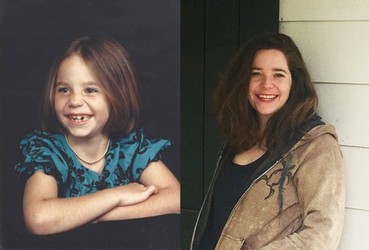

In January of 2016, Lindy and her shiny new Ph.D moved back to Amador, with the long-term plan being for Lindy to take over the winery and let her parents retire. I asked Lindy how her parents took the news and she said, “They were thrilled! Me coming back meant that they get to keep the business. Having someone else run your business isn’t the same as having a family member run the business, they don’t have the same feelings, the same connection, the same values.”
At this point, I asked Lindy what was behind her decision to come home and eventually take over her family’s business and she said, “I just missed everything about it. I missed talking to people. I missed caring about the earth. I missed seeing how things grow and watching the cycle as a grape grows on a vine and then is crushed and turned into wine. I missed my family. To me, this winery and this tasting room are my family. The tasting room is more my home than my parents’ house is.”
As of now, Lindy is the Director of Sales & Marketing for Vino Noceto and is fully aware that her title could change at any moment. I get the impression that she’s up for any change her parents might throw her way. “It feels like I’m back home in a really great way and I feel like my skills and my experiences let me do something that other people can’t do. It feels really right,” says Lindy.
I asked Lindy what was in store for the future. “The thing that people don’t talk about enough, in my opinion, is that grapes are grown. Growing the grapes is 90% of winemaking — what earth they are on, how they’re taken care of, how they’re pruned, how many canes you leave on a vine … taking care of the grapes is 90% of what makes a good wine. My vision is to have a Tasting Room that demonstrates that 90% in depth, getting visitors excited about and invested in the creation process. My vision is also to turn Vino Noceto into a community hub, a place where people can come hang out and connect and meet all kinds of people. I want to make it somewhere that hums with vitality and creativity.”
In closing, Lindy had nothing but good things to say about Amador County wine country. “There’s so much variety and openness to experimentation here. I think that’s a lot of what we’re about. We like innovating and experimenting and trying new things and making new wines that we’ve never made before. That’s kinda the fun,” says Lindy. “I think Amador is about to explode in a really great way that is still true to who Amador is. It’s still like you’re going into someone’s home when you go into a tasting room here, and I don’t think that’s going to change. Everyone’s welcome over for dinner here!”
I hope you’ve enjoyed getting to know Lindy Gullett a little better than you did before. Do you have an idea of who I should interview next? Please send your suggestions of staff members or long-time wine club members to lindy@noceto.com.
